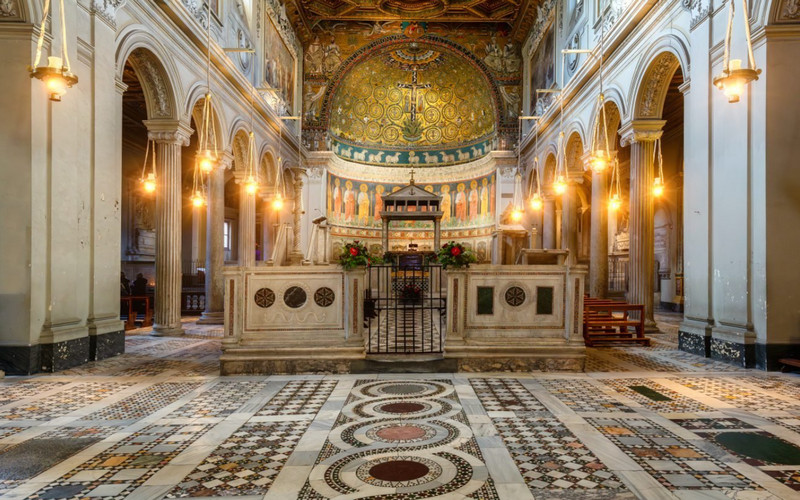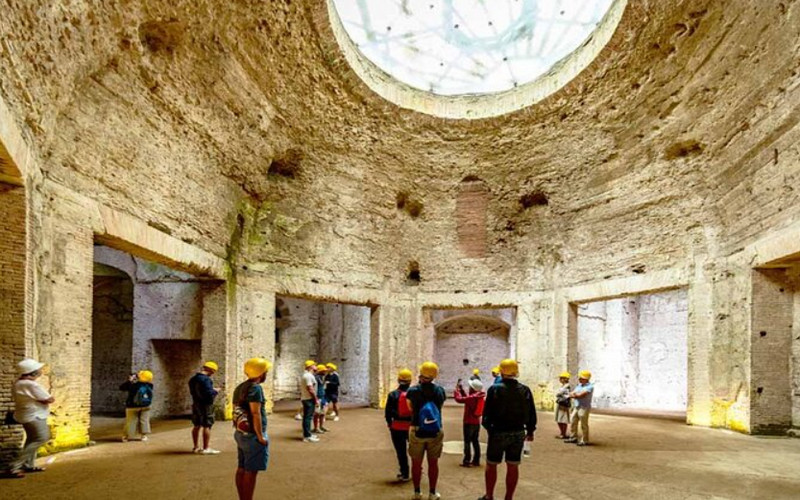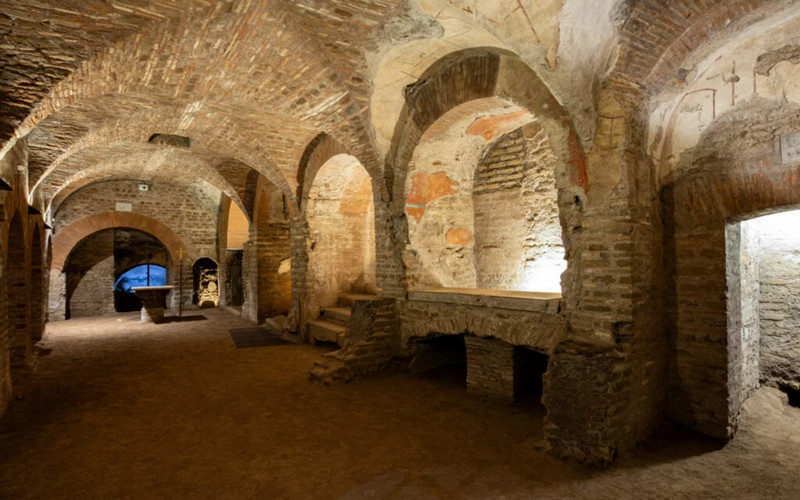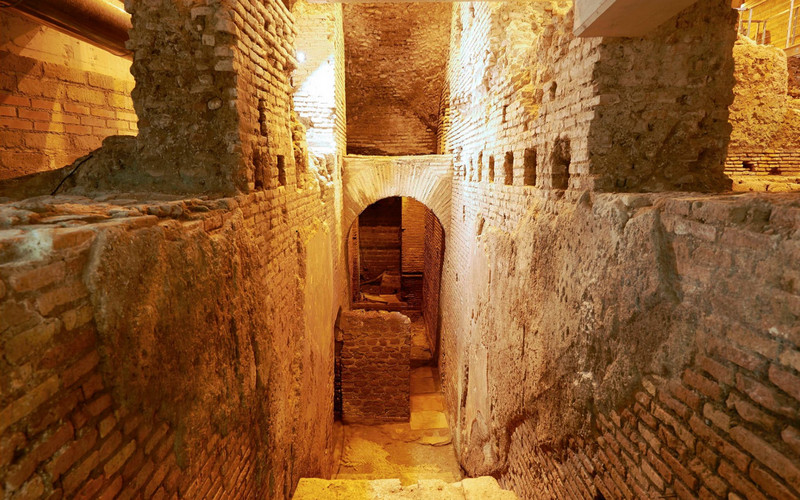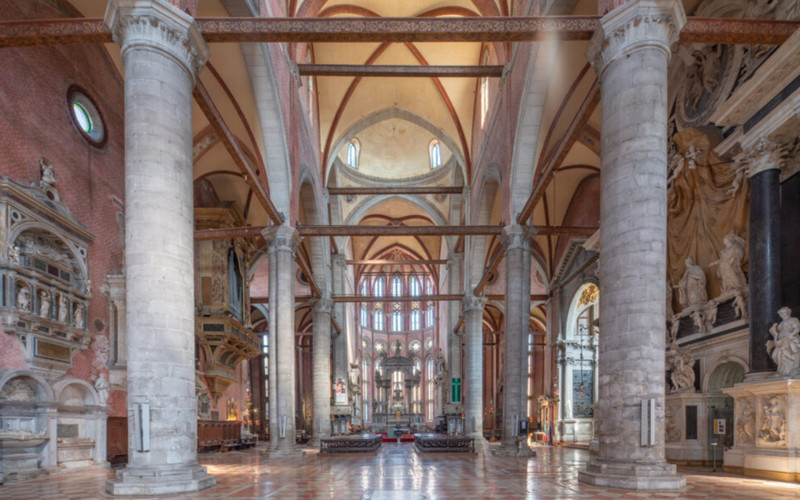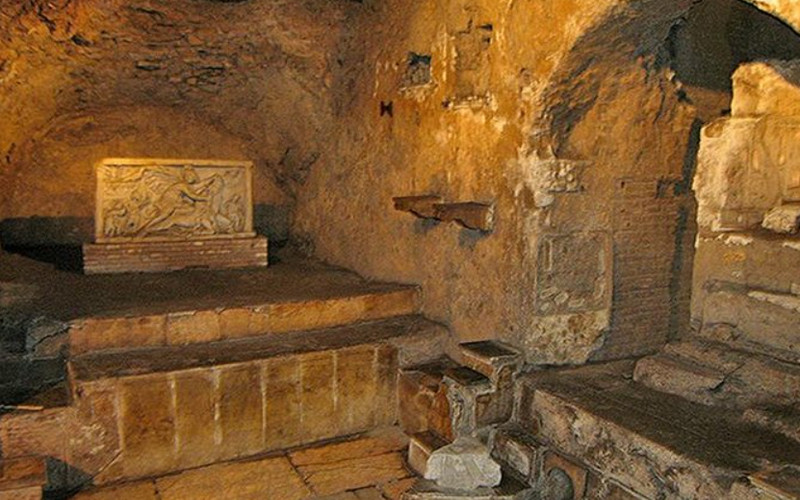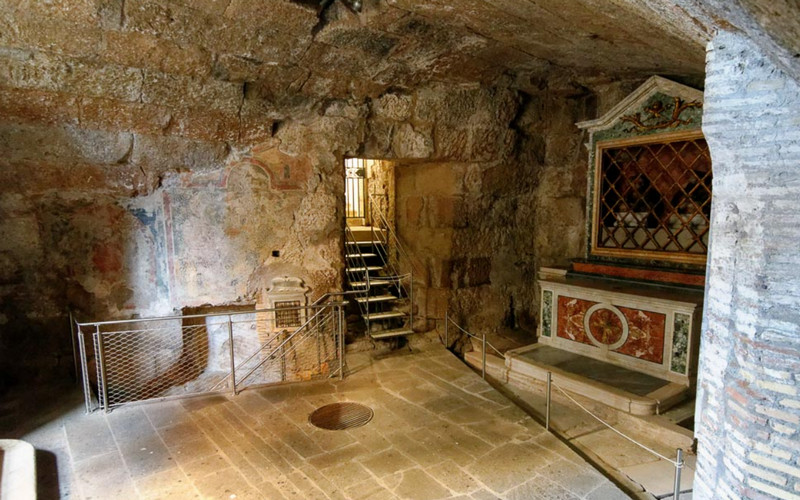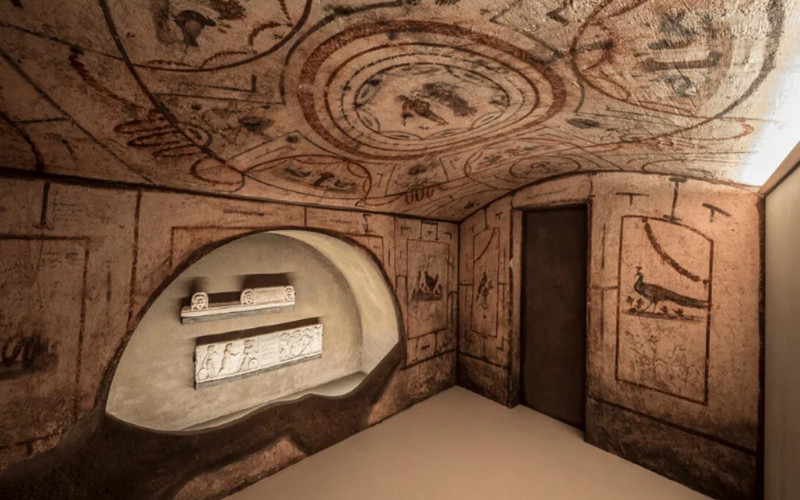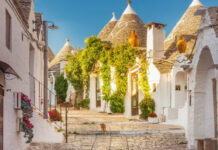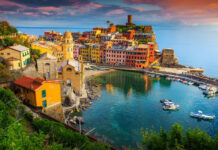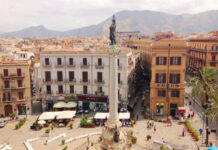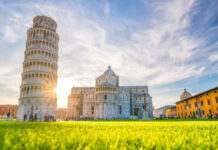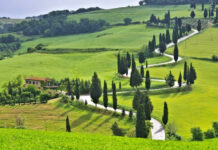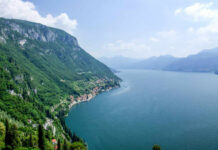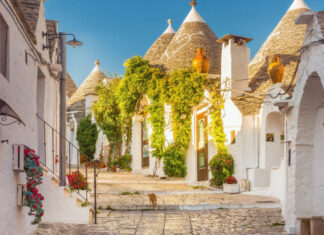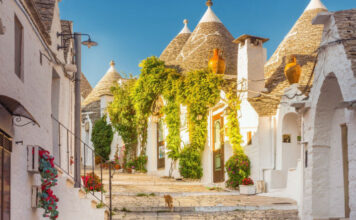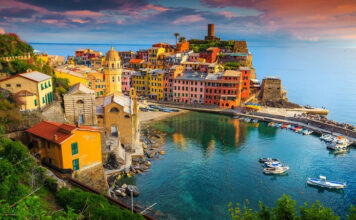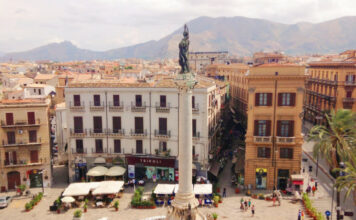When most people think of Rome, they imagine ancient ruins basking under the Italian sun—iconic landmarks like the Colosseum, Trevi Fountain, and St. Peter’s Basilica. But beneath the cobbled streets of the Eternal City lies an entirely different Rome: one of shadow, silence, and secrets. From pagan temples and hidden catacombs to ancient marketplaces and forgotten vaults, the underground world of Rome is vast, mysterious, and largely unknown to even seasoned travelers.
If you’re ready to go beyond the obvious, here are 10 secret underground places in Rome you probably didn’t know existed:
1. Basilica di San Clemente – A Church on Top of a Church on Top of a Temple
San Clemente isn’t just a beautiful basilica—it’s a historical layer cake. Beneath the 12th-century church lies a 4th-century Christian basilica. Beneath that is a 1st-century Roman house and a Mithraeum—a temple dedicated to the mysterious cult of Mithras.
Each layer is impeccably preserved, complete with ancient frescoes, mosaics, and even an underground stream. Walking through these layers is like time-traveling through 2,000 years of Roman religion and architecture in a single hour.
2. Domus Aurea – Nero’s Golden Palace Beneath a Park
After the Great Fire of Rome in 64 AD, Emperor Nero built his lavish Domus Aurea (Golden House), sprawling across nearly 300 acres. Most of it was buried after his death to erase his memory, but parts remain beneath Oppian Hill near the Colosseum.
This underground palace still bears traces of gold-leaf ceilings, vibrant frescoes, and vaulted halls that inspired Renaissance artists like Raphael. Tours now allow visitors to experience the ruins with virtual reality headsets, bringing Nero’s decadent vision back to life beneath your feet.
3. Catacombs of Priscilla – The “Queen of the Catacombs”
While several catacombs are well-known, the Catacombs of Priscilla remain one of the most atmospheric and least crowded. These 2nd-century burial tunnels run for miles beneath the Via Salaria and include some of the oldest known Christian art in existence.
You’ll find frescoes of early saints, biblical scenes, and the first known image of the Virgin Mary. It’s a silent, sacred maze that brings ancient faith to life.
4. Vicus Caprarius – The City of Water Beneath Trevi Fountain
Just behind the bustling Trevi Fountain lies Vicus Caprarius, also known as the “City of Water.” Discovered during construction work, this underground archaeological site reveals the remains of a Roman insula (apartment block) and aqueduct channels that once fed the fountain.
Fragments of ancient pottery, walls, and water systems are still visible—and it’s surreal to realize that as thousands toss coins above, an entire Roman neighborhood lies silently below.
5. Crypta Balbi – Where Rome’s Layers Collide
Part of the National Roman Museum, Crypta Balbi offers more than statues and mosaics. It’s the only museum in the world built directly atop an archaeological site that evolved continuously from ancient Rome through the Middle Ages.
You’ll walk through streets that were once part of an ancient theater complex, see medieval workshops, and explore cellars used as prisons and stables. It’s one of the clearest windows into how Rome changed over the centuries—right beneath your feet.
6. Basilica dei Santi Giovanni e Paolo – The Case Romane
Under this church on the Caelian Hill are the Case Romane, or Roman Houses. These well-preserved homes from the 2nd and 3rd centuries AD belonged to wealthy families and later became places of Christian worship and martyrdom.
You can stroll through vibrant frescoed rooms, private chapels, and even see graffiti left by early Christian followers. Few tourists realize that one of Rome’s most mysterious underground treasures hides behind such a modest façade.
7. Underground Colosseum – The Hypogeum
While millions visit the Colosseum each year, few truly explore its most chilling feature: the hypogeum, a two-level subterranean network beneath the arena floor. This was where gladiators waited, wild animals were held in cages, and elaborate stage machinery operated.
You’ll find trap doors, hidden lifts, and tunnels used for surprise entrances during games. Standing in these dark corridors, it’s easy to imagine the tense moments before the roar of the crowd above.
8. Mithraeum of Circus Maximus – A Pagan Mystery Beneath the Chariot Track
Hidden below the famous chariot-racing arena is a nearly intact Mithraeum, a subterranean temple used by followers of the cult of Mithras. This secretive Roman religion worshiped a Persian god of light through mysterious rituals conducted in underground chambers.
This mithraeum features benches, an altar, and frescoes depicting the god slaying a cosmic bull—a central myth of the cult. It’s one of the best-preserved Mithraic temples in the world and a window into Rome’s forgotten spiritual life.
9. The Mamertine Prison – Where Apostles Were Held
Beneath the Church of San Giuseppe dei Falegnami, near the Roman Forum, lies the Mamertine Prison, where Saints Peter and Paul were allegedly imprisoned before their executions.
The damp stone cell, iron rings, and underground spring offer a sobering experience. Whether or not the apostles were actually held here, the sense of ancient punishment and martyrdom is deeply powerful.
10. The Jewish Catacombs of Vigna Randanini – A Hidden Minority’s Burial Grounds
Far less known than the Christian catacombs, the Jewish Catacombs of Vigna Randanini date to the 2nd and 3rd centuries AD. Hidden under private land on the Appian Way, they contain Hebrew inscriptions, menorahs carved into walls, and bilingual epitaphs in Greek and Latin.
These underground tombs reflect Rome’s diverse history, showcasing how Jewish communities thrived—and suffered—in Imperial Rome. Access is limited, but guided visits offer a rare glimpse into a community often left out of mainstream Roman history.
The Eternal City Beneath the Surface
Rome is a city of layers, where every stone, street, and arch has a story—and beneath it all lies another world entirely. These secret underground places offer a deeper, more intimate connection to the city’s past. While the monuments above ground tell the grand story of empire, faith, and art, the shadows below whisper of rituals, resistance, and real lives once hidden from view.
If you’re ready to experience Rome beyond the guidebooks, start by going underground—just don’t forget your flashlight and sense of wonder.
